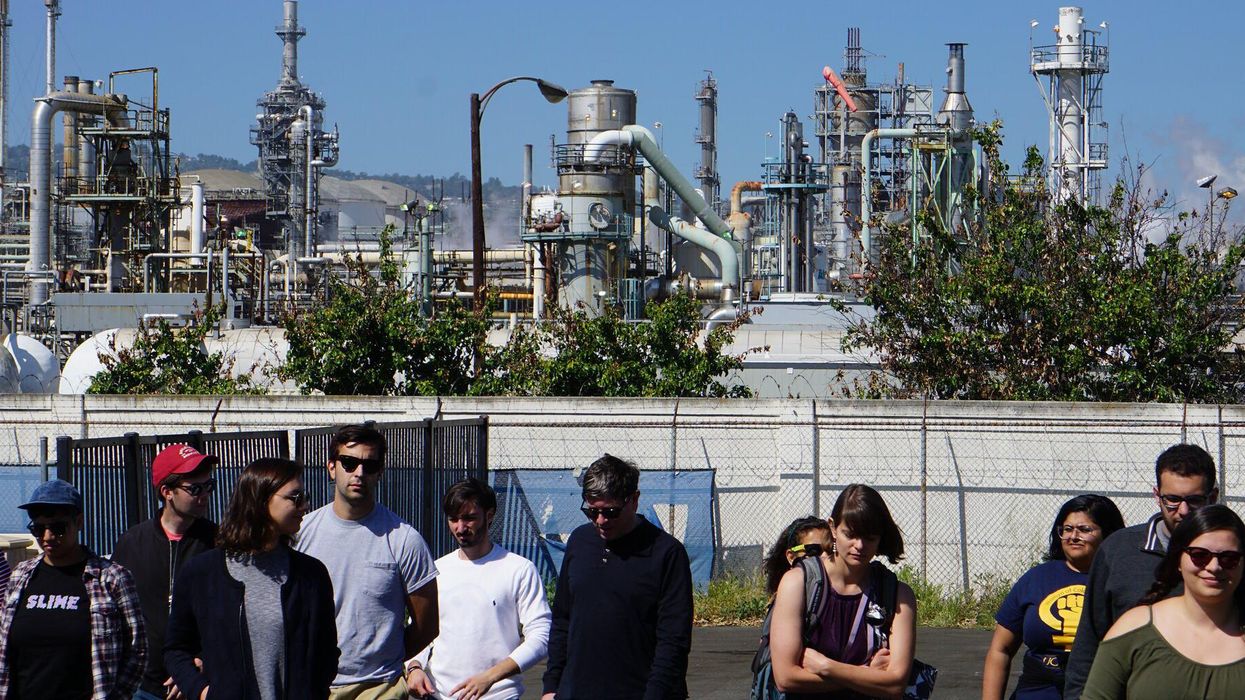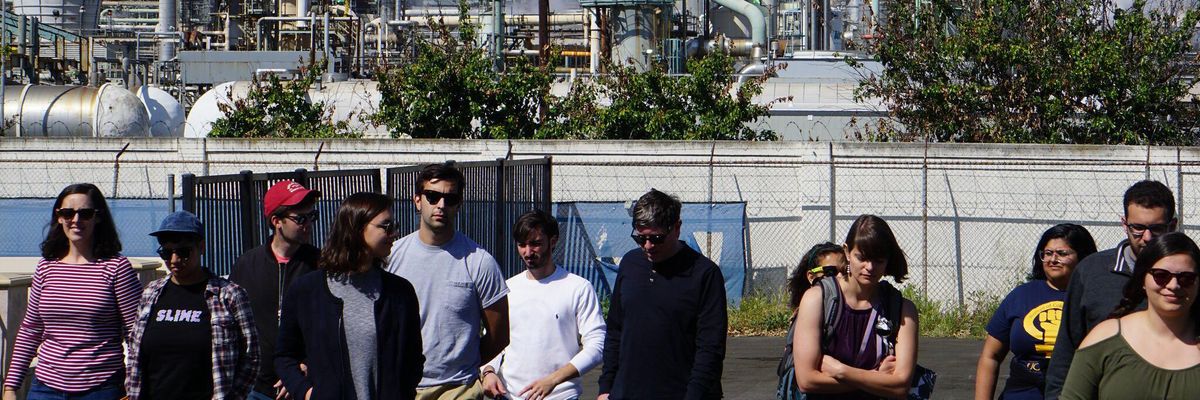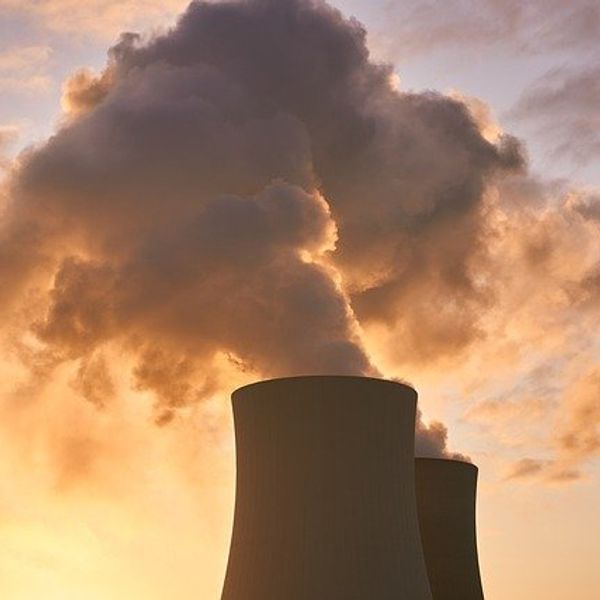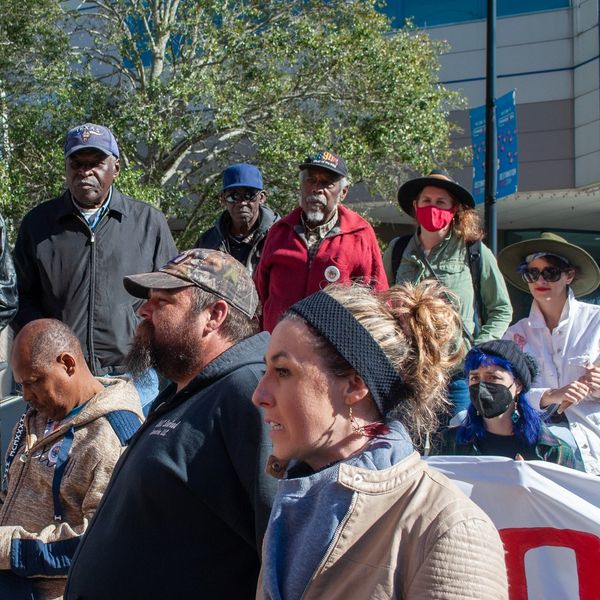Last month the Biden Administration announced that it would resume selling leases for new oil and gas drilling on public lands.
This decision raises significant climate change and environmental justice concerns, particularly for those disadvantaged communities who may live near future drilling sites.
Our recent study on community exposures to oil and gas production shows that historical redlining has perpetuated patterns of environmental injustice. Redlined neighborhoods have nearly twice the density of oil and gas wells than otherwise comparable neighborhoods that were not redlined.
This essay is also available in Spanish
Our findings may partially explain how it is that Black and Latinx people are more likely to live near oil and gas development infrastructure today.
In light of these findings, policymakers should consider the scientific evidence of the risks posed by oil and gas production to public health, and how historical racist policies contributed to the health disparities we see today.
Redlining and environmental injustice
Many environmental problems disproportionately faced by communities of color and the poor in the U.S. are rooted in discriminatory policies put in place generations ago by local, state, and federal governments. One such policy is known as redlining, in which the federal Home Owners’ Loan Corporation, in trying to revive the housing market in the 1930s in the wake of the Great Depression, graded and mapped how risky neighborhoods were for real estate investment.
Neighborhoods comprised of largely low-income, immigrant, or Black residents were deemed “hazardous” or “definitely declining” and mapped in red (i.e., redlined), while whiter and wealthier communities were considered “best” or “still desirable.”
A 2018 study in Los Angeles found that at least some Home Owners’ Loan Corporation officials explicitly considered the racial makeup of neighborhoods and the presence of oil and gas wells when making decisions about redlining, which influenced future locations of new oil and gas development. Officials gave the highest grade to one predominantly white Los Angeles neighborhood near oil and gas wells after local leaders agreed to impose “racial restrictions in perpetuity,” to keep the neighborhood white while also stopping future oil and gas well drilling. In our recent study, we found that neighborhoods that already had wells were more likely to be redlined, and, in turn, redlined neighborhoods were more likely to have new oil and gas wells drilled after the policy went into effect.
These legacies remain imprinted on neighborhoods today. For many families who have stayed in their redlined neighborhoods for generations, significant environmental and health consequences remain. Research shows that historically redlined neighborhoods have worse air quality, a lack of greenspace, and higher heat island risks, as well as elevated rates of cardiovascular disease, asthma hospitalizations, poor birth outcomes, and other diseases.
Although redlining may not have directly caused these disparities, this discriminatory policy codified and accelerated them through disinvestment in already struggling neighborhoods, which, in turn, has shaped the present-day location of environmental hazards and associated health risks. In terms of oil and gas production, research shows that drilling and operating oil and gas wells worsens air pollution and puts residents living nearby at risk of respiratory disease, cardiovascular disease, depression, and poor birth outcomes, including premature birth.
Shifting away from oil and gas
In California, policymakers, affected residents, and advocates are debating how to protect communities and workers from the impacts of nearby oil and gas production operations, including limiting new drilling permits and establishing buffer zones between active wells and the places where people live, work, play, and go to school. As the state seeks to phase out oil and gas production and prohibit drilling in residential neighborhoods, policymakers should account for the ongoing adverse impact of historical redlining on the environmental quality of communities of color.
This requires that decision-makers engage fence-line communities near oil and gas production facilities to reduce exposures. It also requires expanding programs such as California’s Climate Investments, which has invested over $4.5 billion in transformative, environmental justice projects that address climate change, including renewable energy initiatives. Similarly, the Biden Administration’s Justice40 Initiative, modeled closely on California’s program, would require that at least 40% of federal investments in climate-change mitigation and clean energy projects benefit environmental justice communities.
The worsening climate crisis, along with strained energy supply chains due to rising global tensions amid the Russian invasion of Ukraine, make clear the urgent need for the U.S. to shift away from oil and gas production and toward renewable energy sources. Equally important is that hastening this energy transition would go a long way toward advancing environmental justice for those communities who have endured the health impacts of oil and gas development for generations.
Banner photo: UCLA Law students and faculty participated in a toxic tour of Wilmington, CA, a predominantly Latinx neighborhood surrounded by the Port of Los Angeles, heavy industry, and an oil field in 2019. (Credit: Emmett Institute/flickr)
- After a decade of research, here's what scientists know about the ... ›
- Fractured: The body burden of living near fracking - EHN ›
- Majority-Black Pennsylvania community fights back against proposed $6 billion LNG terminal - EHN ›
- La producción de gas natural licuado tiene un precio, advierten las comunidades la Costa del Golfo - EHN ›
- LNG production comes with a price, Gulf Coast communities warn - EHN ›





























